The Art and Science of Pottery Creation
Exploring the intricate balance between creativity and technique, pottery is an ancient craft that marries the natural world with human expression. From the moment clay is shaped by hand or wheel, a transformation occurs—raw earth becomes a vessel of art and utility. But what exactly is the magic behind this process? Is it merely the manipulation of materials, or is there a deeper connection to culture and history? In this article, we’ll dive into the fascinating world of pottery, examining its history, materials, techniques, and its cultural significance. Buckle up as we embark on this creative journey!
The story of pottery is as old as civilization itself. From the earliest days of human existence, people have shaped clay into functional and decorative items. The evolution of pottery reflects significant cultural shifts, such as the advent of agriculture and the rise of cities. Did you know that the oldest known pottery dates back to around 29,000 BCE? Found in Eastern Europe, these ancient artifacts reveal the ingenuity and creativity of our ancestors. Over the centuries, pottery has evolved from simple, utilitarian forms to intricate works of art that tell stories of the cultures they represent. The transition from hand-built to wheel-thrown pottery marked a pivotal moment in this craft, showcasing human innovation and skill.
At the heart of pottery creation lies the choice of materials. The type of clay used can dramatically alter the final product, influencing both aesthetics and functionality. There are several types of clay, each with its unique properties. Understanding these materials is crucial for any potter. Here’s a quick overview:
| Type of Clay | Characteristics | Common Uses |
|---|---|---|
| Earthenware | Porous, low firing temperature | Household items, decorative pieces |
| Stoneware | Durable, high firing temperature | Functional pottery, dinnerware |
| Porcelain | Translucent, high firing temperature | Fine china, artistic sculptures |
Understanding the different types of clay is essential for potters. Let’s delve deeper into the three main types:
Earthenware is perhaps the most accessible type of clay, often used by beginners. It’s characterized by its porosity, which means it can absorb water unless glazed. Historically, earthenware has been used for thousands of years, primarily for everyday items like pots and dishes. Its rich colors and textures can add a rustic charm to any piece, making it a popular choice for decorative pottery.
On the other hand, stoneware is known for its durability and versatility. This type of clay is fired at higher temperatures, making it less porous and more resistant to chipping. Stoneware is often used for both functional and artistic pottery, appealing to those who want a balance between utility and aesthetics. Its ability to retain heat makes it ideal for cooking vessels!
Once the clay has been shaped and fired, it's time to consider the finishing touches—glazes! These are not just for aesthetics; they also serve to make pottery more functional. The right glaze can enhance the color, texture, and durability of a piece. There are countless types of glazes, each with its unique chemical makeup and application method. From glossy to matte finishes, the choices are endless, allowing potters to express their creativity in myriad ways.
The techniques used in pottery creation are as diverse as the materials themselves. Each method requires a unique set of skills and offers different artistic possibilities. Whether you’re hand-building or wheel-throwing, every technique has its charm. The beauty of pottery lies in the journey of creation, where every twist and turn of the clay tells a story.
Hand-building is a technique that allows for a personal touch. Popular methods include:
- Coiling: Rolling out long strips of clay and stacking them to form shapes.
- Pinching: Using fingers to shape and form the clay into desired designs.
- Slab Construction: Creating flat pieces of clay and assembling them into structures.
Each of these methods offers a unique way to express creativity and individuality in pottery.
Wheel throwing, on the other hand, is a dynamic technique that requires practice and precision. The potter uses a spinning wheel to shape the clay, creating symmetrical forms that can be both beautiful and functional. Mastering this technique can be a thrilling experience, as the wheel transforms a lump of clay into a stunning vessel in mere moments.
Pottery is not just about functionality; it’s a reflection of cultural identity. Throughout history, different societies have used pottery to express their values, beliefs, and artistic expressions. From ancient rituals to modern art, pottery has played a pivotal role in human connection and communication.
Today, pottery is experiencing a renaissance. Artists are exploring innovative techniques and styles, pushing the boundaries of traditional pottery. The integration of sustainability in pottery practices is gaining momentum, with many potters opting for eco-friendly materials and methods. This shift not only benefits the environment but also fosters a sense of community among artists.
As we become more aware of environmental issues, many potters are embracing sustainable practices. This includes using locally sourced materials, reducing waste, and finding eco-friendly alternatives to traditional glazes. It’s a movement that reflects a growing consciousness about our planet and its resources.
Finally, the pottery community thrives on collaboration. Artists often share techniques, participate in workshops, and engage in community projects. This spirit of cooperation not only enriches individual practice but also strengthens the bonds within the pottery community.
Q: What is the best type of clay for beginners?
A: Earthenware is a great starting point for beginners due to its accessibility and ease of use.
Q: How do I choose the right glaze for my pottery?
A: Consider the desired finish, the type of clay, and the firing temperature when selecting a glaze.
Q: Can pottery be both functional and artistic?
A: Absolutely! Many potters create pieces that serve both purposes, merging utility with artistic expression.
In conclusion, the art and science of pottery creation is a captivating blend of history, materials, techniques, and cultural significance. Whether you are a seasoned potter or a curious beginner, the world of pottery offers endless opportunities for creativity and connection.

History of Pottery
The history of pottery is a fascinating journey that reflects the evolution of human creativity and cultural practices. Pottery dates back to at least 29,000 BCE, making it one of the oldest human crafts. The earliest known pottery was discovered in what is now the Czech Republic, where prehistoric people used clay to create figurines and simple vessels. This ancient craft has undergone significant transformations over the centuries, influenced by various factors such as geography, technology, and societal changes.
Throughout history, pottery has served numerous purposes, from practical uses in daily life to artistic expressions that embody cultural values. In ancient civilizations such as Mesopotamia, Egypt, and China, pottery was not just a utilitarian craft but also a vital part of religious and ceremonial practices. The intricate designs and symbols used in these early pieces often held significant meanings, reflecting the beliefs and traditions of the societies that created them.
As we move through time, we see how pottery styles evolved with the advent of new technologies. The invention of the potter's wheel around 3500 BCE in Mesopotamia revolutionized the craft, allowing for greater precision and uniformity in shape. This innovation marked a turning point, leading to the creation of more sophisticated pottery forms and designs. The wheel throwing technique made it easier for artisans to produce large quantities of pottery, which was crucial for the growing populations of ancient cities.
During the Middle Ages, pottery continued to flourish, particularly in Europe and the Islamic world. The introduction of glazes and decorative techniques, such as the use of cobalt blue in Persian pottery, added beauty and complexity to ceramic art. In this period, pottery became a canvas for artistic expression, with artisans experimenting with various styles and motifs. The Renaissance period further propelled pottery into the realm of fine art, with notable figures like Bernard Leach in the 20th century advocating for the recognition of pottery as a legitimate art form.
In modern times, the history of pottery is characterized by a blend of traditional techniques and contemporary innovations. Artists today draw inspiration from ancient methods while incorporating new materials and technologies. The rise of studio pottery movements in the late 20th century emphasized the importance of individuality and personal expression in ceramic art, leading to a vibrant community of potters who push the boundaries of the craft.
To summarize, the history of pottery is not just a timeline of events but a rich tapestry that weaves together human ingenuity, cultural significance, and artistic expression. From ancient clay figurines to modern masterpieces, pottery has continuously evolved, reflecting the diverse experiences and values of societies throughout history.
- What is the oldest known pottery? The oldest known pottery dates back to approximately 29,000 BCE and was discovered in the Czech Republic.
- How did the potter's wheel change pottery making? The potter's wheel allowed for greater precision and uniformity in pottery shapes, enabling the mass production of ceramic items.
- What are some modern trends in pottery? Contemporary pottery trends include the use of eco-friendly materials, innovative glazing techniques, and an emphasis on personal artistic expression.
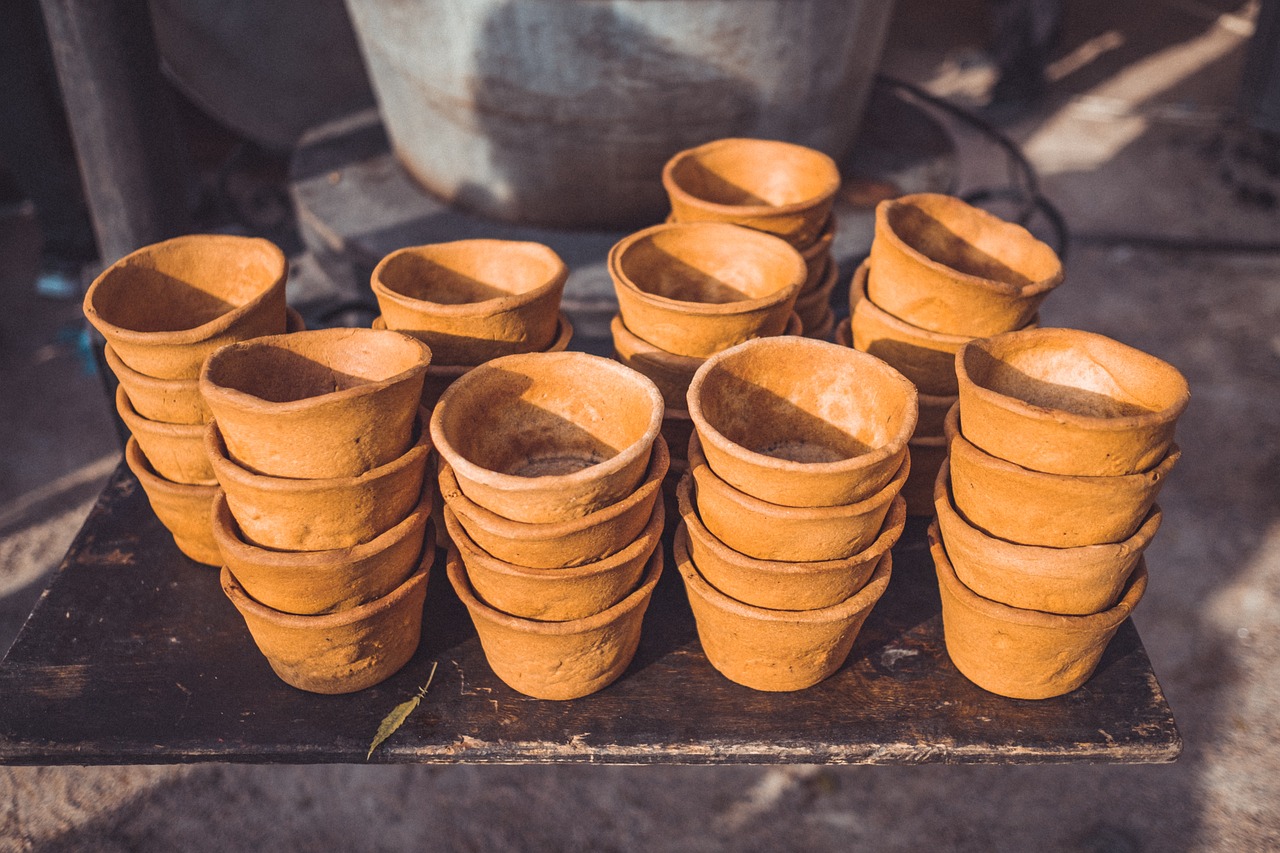
Materials Used in Pottery
When it comes to pottery, the materials you choose can make or break your creation. Just like a chef needs quality ingredients to whip up a delicious dish, a potter relies on specific materials to craft beautiful and functional pieces. The foundation of pottery is primarily clay and glaze, each with unique properties that significantly influence the final product. Understanding these materials is crucial for anyone looking to dive into the world of pottery.
At the heart of pottery lies clay, a natural material formed from the weathering of rocks over time. There are several types of clay available, each serving different purposes and yielding distinct results. The most common types include:
- Earthenware: This is the most basic type of clay, known for its porous nature and vibrant colors. It’s often used for decorative pieces and pottery that doesn’t require high durability.
- Stoneware: A more robust option, stoneware is fired at higher temperatures, making it less porous and more durable. It’s perfect for functional items like dinnerware and cookware.
- Porcelain: Renowned for its fine texture and translucence, porcelain is often associated with high-end pottery. It requires precise techniques and is typically used for intricate designs.
Each type of clay offers unique characteristics that can affect the pottery's final look and feel. For instance, earthenware can be easily shaped and is forgiving for beginners, while porcelain demands a higher level of skill and precision. The choice of clay not only impacts the aesthetic appeal but also the functional aspects of the pottery.
Now, let’s talk about glazes. A glaze is a glass-like coating applied to the surface of pottery that enhances both its appearance and functionality. Think of it as the icing on a cake—while the cake itself is essential, the icing adds that extra flair! Glazes can be glossy, matte, or textured, and they come in a variety of colors and finishes. The chemistry behind glazes is fascinating; they are made up of silica, fluxes, and alumina, which work together to create the desired effect when fired in a kiln.
Applying glaze is an art in itself. Potters can use various techniques to achieve different results, such as dipping, brushing, or spraying. Each method can produce a unique finish, adding depth and character to the piece. Moreover, the interaction between the glaze and the clay body during firing can lead to unexpected and beautiful effects, creating a truly one-of-a-kind item.
The materials used in pottery don't just define the aesthetic; they also play a crucial role in the functionality of the finished product. For instance, a piece made from stoneware is likely to be more durable and suitable for everyday use compared to one made from earthenware, which may chip easily. Additionally, the choice of glaze can affect the pot's usability—some glazes are food-safe while others are not, and this is an essential consideration for anyone looking to create functional pottery.
In summary, the materials you select for pottery are integral to both the creative process and the practical application of your work. By understanding the properties of different clays and glazes, you can make informed decisions that will enhance your pottery-making experience and the quality of your finished pieces.
Q: What type of clay is best for beginners?
A: Earthenware is often recommended for beginners due to its workability and forgiving nature.
Q: Can I use any glaze on my pottery?
A: Not all glazes are food-safe. Always check the label and ensure the glaze is suitable for the intended use of your pottery.
Q: How do I know which glaze to choose?
A: The choice of glaze depends on the desired finish, color, and functionality. Experimenting with different glazes can help you find what works best for your style.
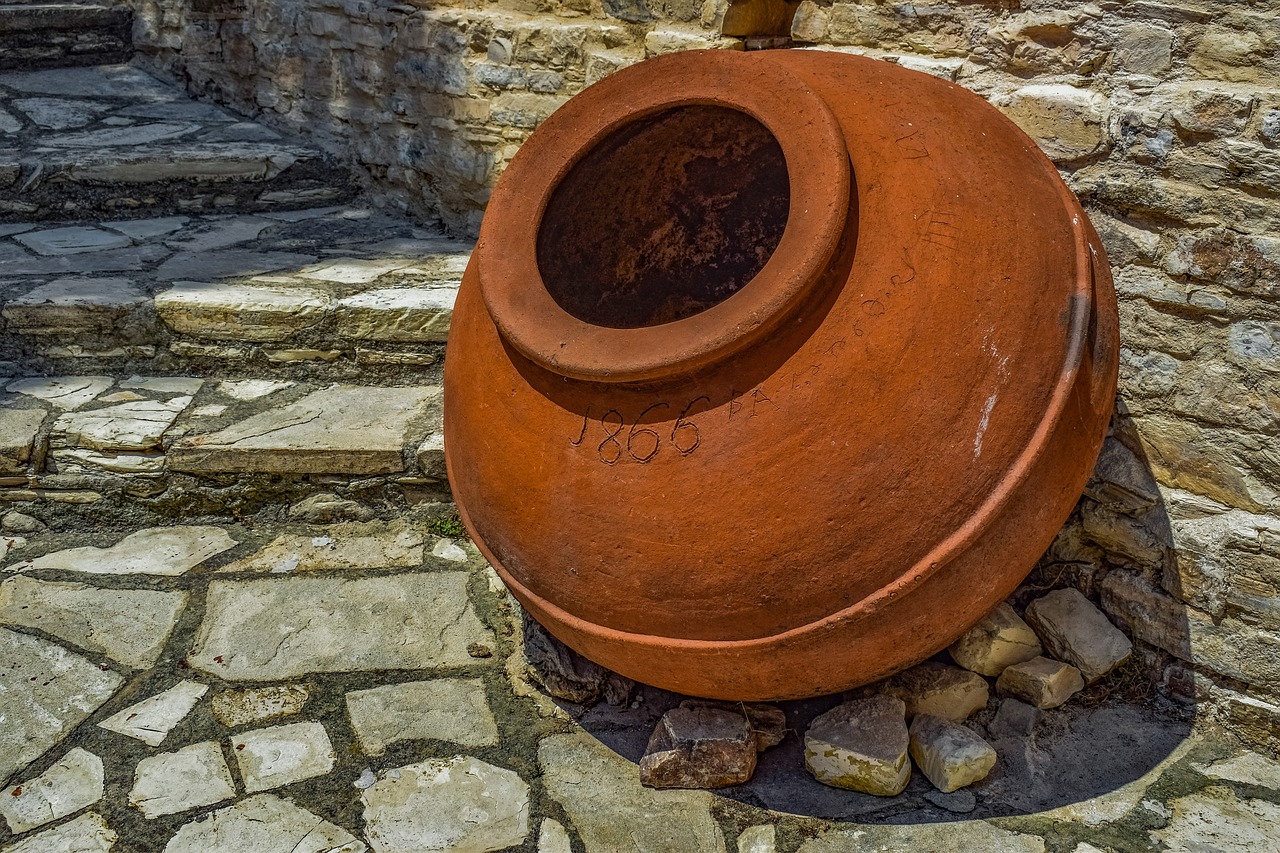
Types of Clay
When it comes to the world of pottery, the type of clay you choose can make all the difference in your creation. Each clay type has its own unique properties, which can affect everything from the strength and durability of the final product to its aesthetic appeal. Let’s dive into the three main types of clay that potters frequently use: earthenware, stoneware, and porcelain.
Earthenware is perhaps the most accessible type of clay. It’s known for its versatility and ease of use, making it a favorite among beginners. This clay is fired at lower temperatures, typically between 1,830°F and 2,200°F (1,000°C to 1,200°C), which gives it a porous quality. This means that earthenware can absorb water unless it is glazed. Historically, earthenware has been used for everything from simple dishes to decorative pottery, and its rustic charm often appeals to those seeking a more traditional look.
On the other hand, stoneware is fired at much higher temperatures, usually between 2,190°F and 2,400°F (1,200°C to 1,300°C). This process makes stoneware incredibly durable and less porous than earthenware. It’s perfect for functional pottery like plates, mugs, and bowls that can withstand daily use. Stoneware can also be beautifully glazed, allowing for a range of artistic expressions. Because of its strength, many potters appreciate stoneware for both its utility and its ability to showcase intricate designs.
Finally, we have porcelain, often regarded as the most refined type of clay. Porcelain is fired at even higher temperatures, typically around 2,300°F (1,260°C) and above, making it incredibly strong and non-porous. This clay is known for its smooth texture and ability to be molded into very thin forms. The translucency of porcelain when thinly crafted can create stunning effects, making it a popular choice for fine china and delicate sculptures. However, working with porcelain can be challenging due to its tendency to warp and crack if not handled properly.
| Type of Clay | Firing Temperature (°F) | Characteristics | Common Uses |
|---|---|---|---|
| Earthenware | 1,830 - 2,200 | Porous, rustic charm | Dishes, decorative pottery |
| Stoneware | 2,190 - 2,400 | Durable, less porous | Mugs, plates, bowls |
| Porcelain | 2,300+ | Translucent, smooth | Fine china, sculptures |
In summary, the type of clay you choose for your pottery project can significantly influence the outcome of your work. Whether you’re drawn to the rustic charm of earthenware, the durability of stoneware, or the elegance of porcelain, each type offers unique possibilities for creativity. So, the next time you sit down to create, think about which clay will best suit your artistic vision.
- What is the best type of clay for beginners? Earthenware is often recommended for beginners due to its ease of use and accessibility.
- Can I use stoneware for decorative pieces? Absolutely! Stoneware can be used for both functional and decorative pottery.
- Why is porcelain more expensive than other types of clay? Porcelain requires higher firing temperatures and more refined materials, contributing to its higher cost.
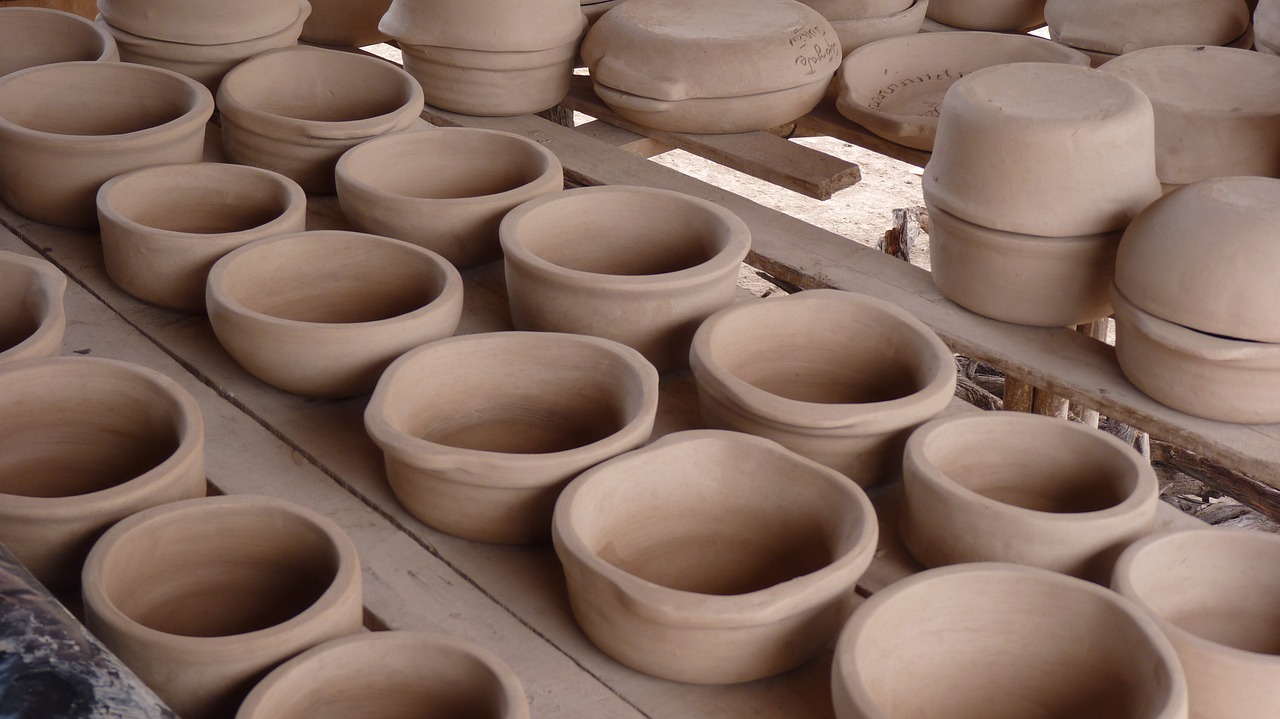
Earthenware
Earthenware is more than just a type of clay; it’s a canvas of history, culture, and creativity. This versatile material has been used for thousands of years, dating back to ancient civilizations. The beauty of earthenware lies in its porous nature, which allows it to absorb glazes and colors in unique ways, creating pieces that are not only functional but also artistic expressions of the potter's vision.
One of the most fascinating aspects of earthenware is its variety of textures and finishes. Depending on the firing temperature, which typically ranges from 1,830°F to 2,200°F (1,000°C to 1,200°C), earthenware can take on different appearances. When fired at lower temperatures, it remains soft and can be easily shaped, making it perfect for beginners and seasoned potters alike. However, its porous nature also means that it is less durable than other types of clay, such as stoneware or porcelain.
Historically, earthenware has played an integral role in various cultures. For instance, in ancient Rome, earthenware pots were used for cooking and storage, while in China, they were often decorated with intricate designs and glazes. This adaptability has allowed earthenware to evolve, reflecting the artistic trends and technological advancements of the time. Today, it remains a popular choice for both practical items like dishes and decorative pieces that showcase the potter's skill.
In terms of applications, earthenware can be categorized into several types, including:
- Terracotta: Often used for plant pots and sculptures, terracotta is known for its reddish-brown color and rustic appearance.
- Stoneware: While technically a different category, some consider stoneware a type of earthenware due to its similar clay composition. It is fired at higher temperatures, giving it more durability.
- Majolica: This is a type of tin-glazed earthenware that is often brightly colored and decorated, making it a favorite for artistic pottery.
When it comes to glazing, earthenware offers a plethora of options. The glazes can enhance the final product's aesthetic appeal while also serving practical purposes, such as making items food-safe. The glazing process typically involves applying a liquid mixture of silica, fluxes, and other materials to the surface of the pottery before firing it in a kiln. This process not only adds color but also creates a glassy finish that can be both beautiful and functional.
In summary, earthenware stands as a testament to the enduring nature of pottery. Its rich history, combined with its versatility and artistic potential, makes it a cherished medium for potters around the world. Whether used for everyday items or intricate art pieces, earthenware continues to capture the hearts of those who appreciate the art and science of pottery creation.

Stoneware
When it comes to pottery, holds a special place in the hearts of both artisans and collectors alike. This type of pottery is known for its remarkable durability and versatility, making it a popular choice for functional and artistic pieces. Unlike earthenware, which is more porous and less resilient, stoneware is fired at higher temperatures, resulting in a dense, non-porous body that can withstand everyday use. Imagine using a bowl that not only looks stunning but can also endure the rigors of daily life—this is the beauty of stoneware!
One of the key characteristics of stoneware is its ability to retain heat, which makes it ideal for baking and serving dishes. When you pull a stoneware casserole out of the oven, it keeps your food warm longer, allowing you to enjoy your meal without the rush. It's like having a trusty companion in the kitchen that not only performs well but also adds an aesthetic touch to your dining experience.
Stoneware is typically made from a mixture of clay, feldspar, and other minerals, which contribute to its unique properties. The firing process transforms these raw materials into a robust material that can be glazed or left unglazed, depending on the desired finish. The glazing process can create a variety of effects, from glossy to matte, and can incorporate vibrant colors or subtle earth tones. This versatility allows artists to express their creativity in numerous ways, making stoneware a canvas for artistic expression.
In terms of applications, stoneware is incredibly versatile. Here are some common uses:
- Casseroles and baking dishes
- Tableware such as plates and bowls
- Decorative items like vases and sculptures
- Functional kitchenware, including mugs and pitchers
Historically, stoneware has roots that trace back centuries, with significant developments occurring in various cultures. For example, the German stoneware tradition is renowned for its intricate designs and functional forms, while Asian stoneware often features beautiful glazes that highlight the natural beauty of the clay. Each culture brings its unique flair to stoneware, resulting in a rich tapestry of styles and techniques.
Today, stoneware continues to be a favorite among potters and consumers alike. Its combination of beauty and practicality makes it a staple in many households. The ongoing innovations in glazing and firing techniques ensure that stoneware remains relevant in the ever-evolving world of pottery. Whether you're a seasoned collector or just starting your journey into the world of ceramics, stoneware offers something for everyone.
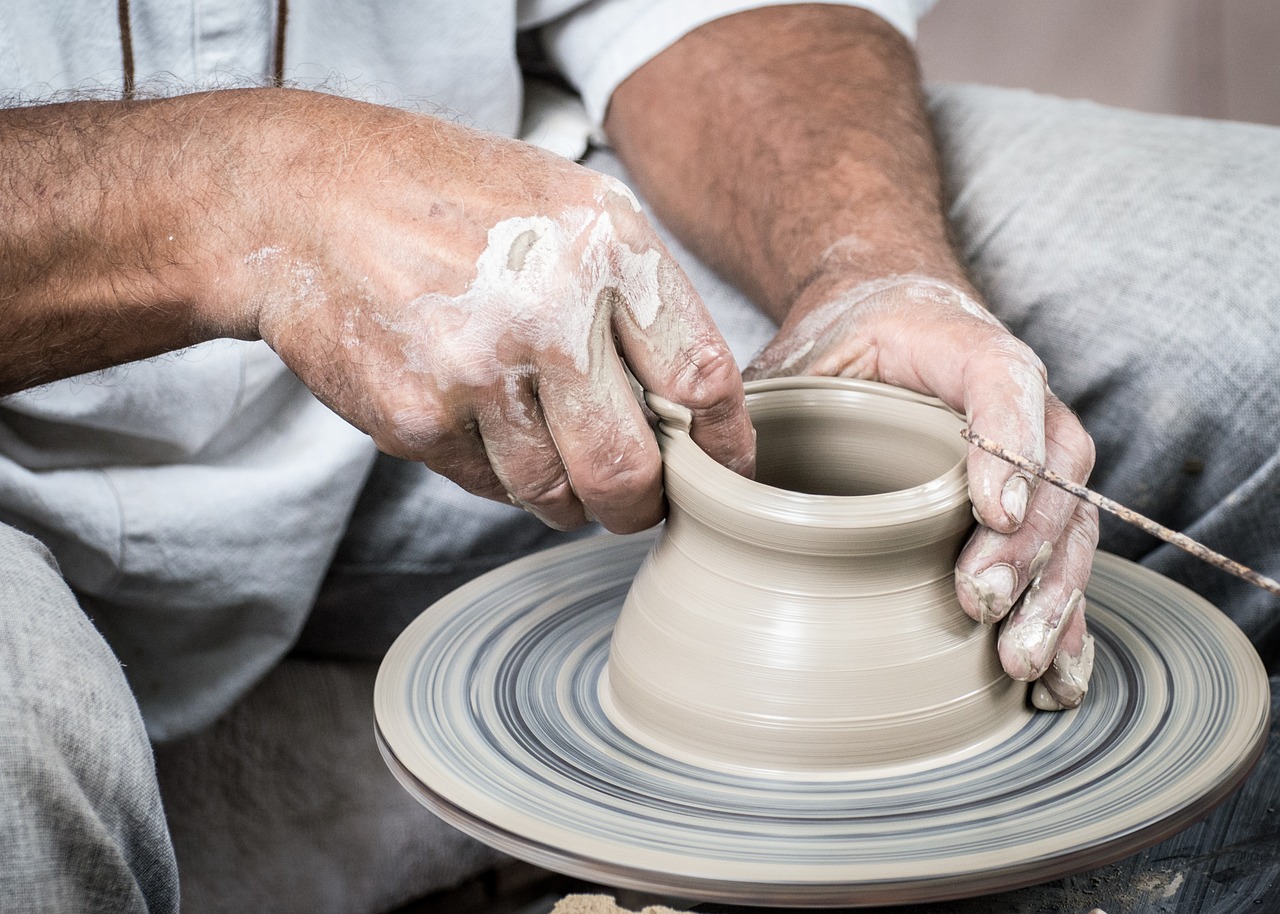
Glazes and Finishes
When it comes to pottery, are like the icing on a cake—they not only enhance the visual appeal but also serve functional purposes. Imagine walking into a pottery studio and being greeted by a dazzling array of colors, textures, and finishes that seem to dance under the light. This is the magic of glazes! They can transform a simple piece of clay into a work of art, showcasing the potter's creativity and skill.
At its core, a glaze is a glass-like coating that is applied to pottery. It can be a liquid suspension of minerals that, when fired in a kiln, melts and forms a shiny surface. The chemistry involved in creating glazes is fascinating; it’s a blend of materials like silica, alumina, and various metal oxides that create different colors and finishes. For instance, adding cobalt oxide can give a stunning blue hue, while iron oxide can produce earthy browns and reds. The possibilities are virtually endless!
Moreover, glazes can be categorized into several types based on their characteristics and firing temperatures. Here are a few popular categories:
- Glossy Glazes: These glazes have a shiny surface that reflects light beautifully, making colors appear vibrant and lively.
- Matte Glazes: Matte finishes offer a soft, non-reflective surface that can create a more subtle and sophisticated look.
- Satin Glazes: A happy medium between glossy and matte, satin glazes provide a soft sheen without the high shine of glossy finishes.
In addition to color, the texture of the glaze plays a crucial role in the overall aesthetic of the pottery. Some potters experiment with textured glazes that can add depth and interest, creating surfaces that are rough, bumpy, or even crystalline. This experimentation is where the artistic expression of pottery truly shines. For example, a potter might use a textured glaze on a bowl to evoke the feeling of natural stone, adding a tactile element that invites touch.
Furthermore, the application technique can significantly influence the final outcome of the glaze. Potters can apply glazes using various methods, including dipping, pouring, or brushing. Each technique can yield different results, and the choice often depends on the desired effect. For instance, dipping a piece in glaze can create a uniform coating, while brushing may result in streaks and variations in thickness, leading to a more dynamic appearance.
It's essential to understand that glazes aren't just about aesthetics; they also impact the functionality of the pottery. A well-applied glaze can make a piece waterproof, allowing it to hold liquids without leaking. This is particularly important for functional items like mugs and bowls. Additionally, certain glazes can enhance durability, making pottery more resistant to chipping and scratching. In this way, glazes serve a dual purpose, marrying beauty with practicality.
The firing process is another critical aspect of glazing. When pottery is fired in a kiln, the heat causes the glaze to melt and fuse with the clay body, creating a permanent bond. This transformation is not just a chemical reaction; it’s a captivating moment where the potter’s vision comes to life. Each firing can produce different results, influenced by factors like kiln atmosphere, temperature, and even the placement of the pottery within the kiln. This unpredictability adds an element of surprise, making every piece unique.
In conclusion, glazes and finishes are an integral part of the pottery-making process, elevating it from mere craft to an art form. They allow potters to express their creativity while also fulfilling practical needs. The next time you admire a piece of pottery, take a moment to appreciate the intricate dance of color, texture, and technique that went into its creation—it's truly a testament to the art and science of pottery.
- What is the difference between glaze and finish? Glaze refers to the glass-like coating applied to pottery, while finish can encompass various surface treatments, including glazes, waxes, or oils.
- Can I create my own glazes? Absolutely! Many potters experiment with mixing different materials to create unique glazes tailored to their artistic vision.
- Are all glazes food-safe? Not all glazes are food-safe. It's essential to use glazes specifically labeled for food use if you intend to serve food in your pottery.
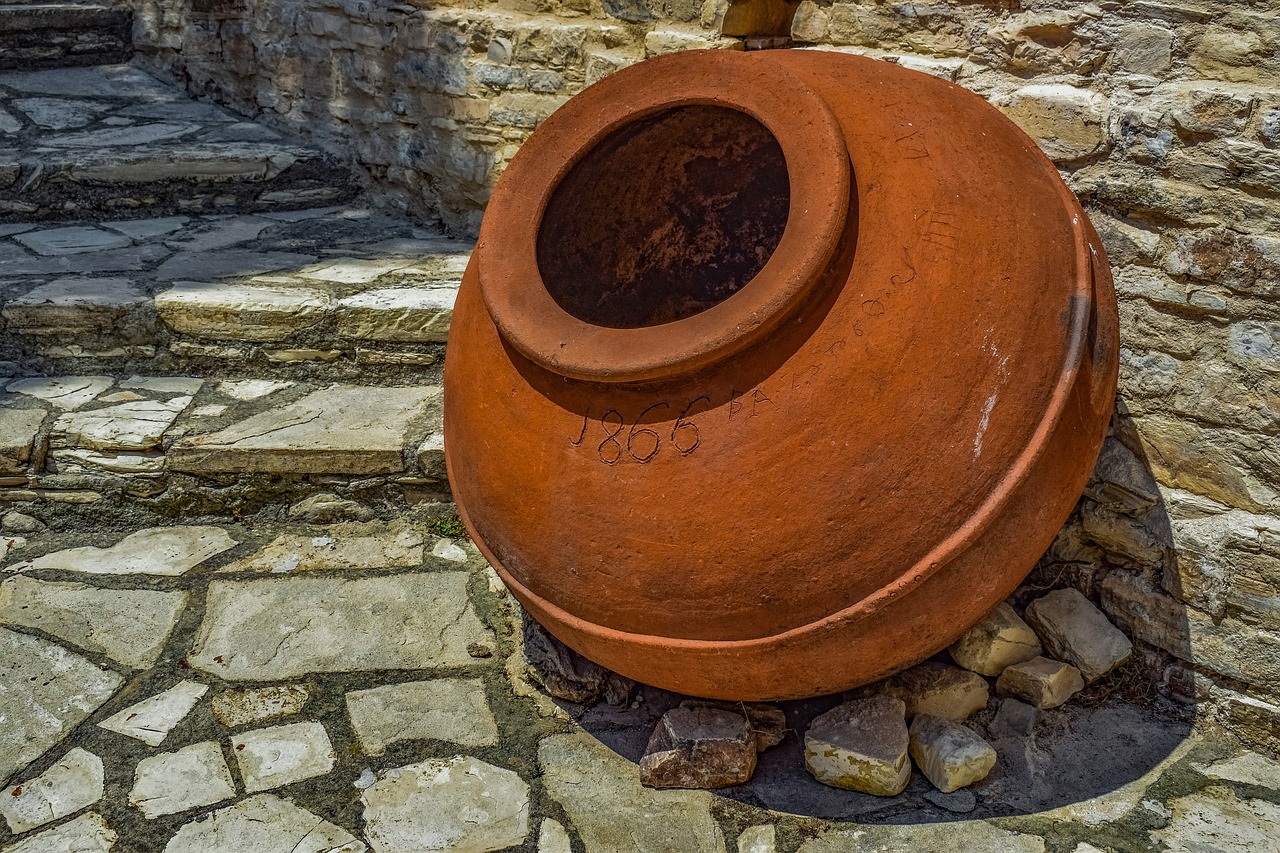
Pottery Techniques
When it comes to creating pottery, the techniques employed can be as diverse as the artists themselves. Pottery is not just about molding clay; it's about transforming raw materials into functional art. Each technique brings its own flavor to the final product, allowing artists to express their creativity while adhering to the principles of craftsmanship. Whether you're a novice or an experienced potter, understanding these techniques is essential for mastering the art of pottery.
One of the most popular methods in the pottery world is hand-building. This technique allows artists to shape their creations without the need for a potter's wheel. Hand-building can take several forms, including coiling, pinching, and slab construction. Each method has its unique charm and can produce stunning results. For instance, coiling involves rolling out long strands of clay and stacking them to create walls, resulting in beautiful, organic shapes. Pinching, on the other hand, involves using fingers to pinch the clay into desired forms, which can create intricate textures and designs. Slab construction entails rolling out flat pieces of clay and assembling them to form various shapes, making it an excellent choice for creating boxes or plates.
On the flip side, we have wheel throwing, a technique that many associate with traditional pottery. The potter's wheel spins the clay, allowing the artist to shape it into symmetrical forms effortlessly. This method is particularly popular for making bowls, vases, and other items that require a uniform shape. Mastering wheel throwing takes practice and patience; it’s akin to learning to ride a bike—once you get the hang of it, the possibilities are endless. The sensation of shaping clay on a wheel is exhilarating, as you watch your creation rise from a simple lump into a stunning piece of art.
Regardless of the technique chosen, the importance of glazing cannot be overstated. Glazes not only enhance the visual appeal of pottery but also serve functional purposes, such as making items waterproof or food-safe. The application of glaze can be done in various ways, including dipping, brushing, or spraying. Each method can yield different results, and experimenting with glazes can lead to delightful surprises. The chemistry behind glazes is fascinating, as different combinations of minerals and oxides can produce a wide array of colors and textures. For pottery artists, understanding the science of glazing is just as crucial as mastering the art of shaping clay.
In summary, the world of pottery techniques is vast and varied, offering countless opportunities for creative expression. Whether you prefer the tactile experience of hand-building or the precision of wheel throwing, each method contributes to the rich tapestry of pottery as an art form. As you delve deeper into these techniques, you'll discover that pottery is not just about making objects; it's about telling a story, conveying emotions, and connecting with a tradition that spans millennia.
- What is the best technique for beginners? Hand-building is often recommended for beginners as it allows for more freedom and creativity without the need for specialized equipment.
- How long does it take to master wheel throwing? Mastery of wheel throwing varies by individual, but with regular practice, many can become proficient within a few months.
- Can I use any type of clay for glazing? Not all clays are suitable for glazing. It's essential to choose a clay that is compatible with the glaze to ensure the best results.
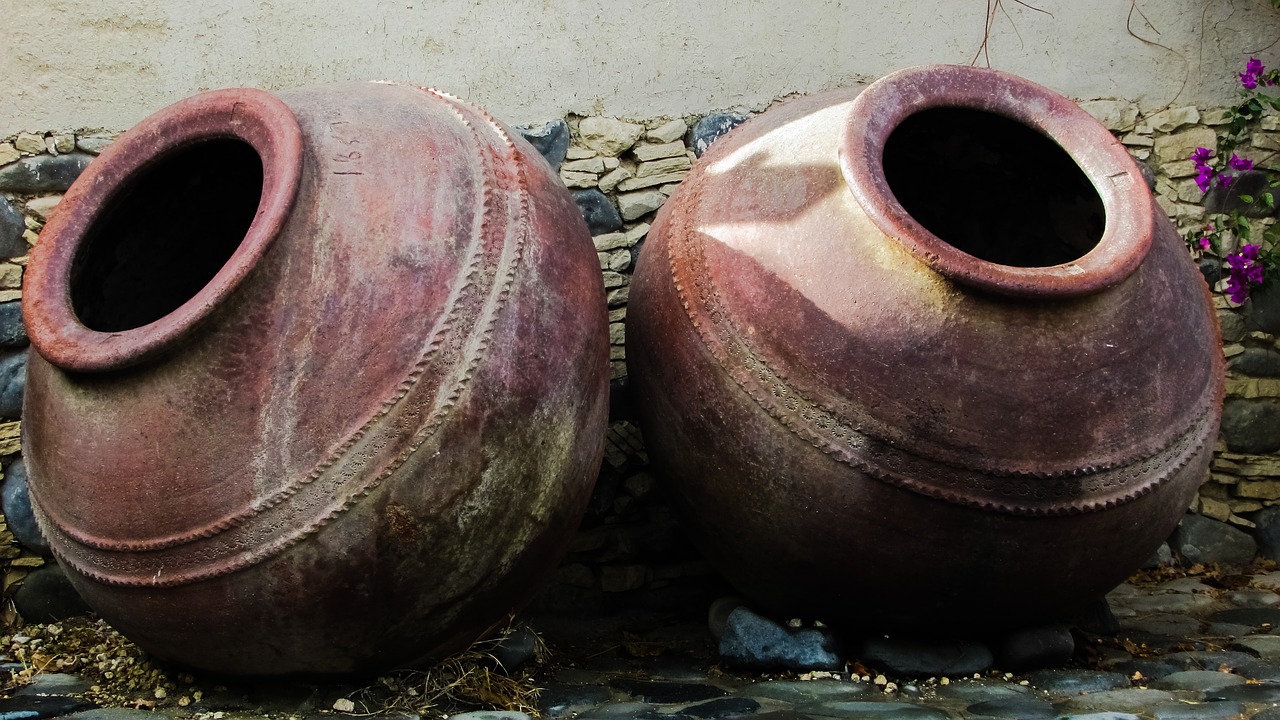
Hand-Building Methods
Hand-building is one of the most ancient and cherished techniques in the world of pottery. Unlike wheel throwing, which requires a potter's wheel, hand-building allows artists to manipulate clay using their hands and basic tools, fostering a deep connection between the creator and their work. This method is not just about creating functional items; it’s a canvas for personal expression, where every curve and line tells a story.
There are several popular hand-building techniques, each offering its own unique flair and possibilities:
- Coiling: This method involves rolling out long, snake-like coils of clay and stacking them to create forms. It’s like building a clay tower, where each coil adds height and character. Coiling is particularly forgiving, allowing for the creation of both simple pots and complex sculptures. The beauty of coiling lies in its versatility; potters can create everything from rustic bowls to intricate vases.
- Pinching: Pinching is the simplest of all hand-building techniques, often used by beginners. It starts with a ball of clay, which is then pinched and shaped into a desired form. Imagine molding a soft ball of dough into a small cup using just your fingers! This technique is perfect for creating small, organic shapes and is often used for making decorative pieces.
- Slab Construction: This technique involves rolling out flat sheets of clay, or slabs, which are then cut and assembled to create various shapes. Think of it like working with cardboard; you can cut, fold, and join pieces to form structures. Slab construction is great for creating larger pieces, such as tiles or boxes, and allows for intricate designs and patterns.
Each of these methods has its own charm and challenges, making hand-building a fascinating journey for potters. For instance, coiling allows for a free-flowing design, while slab construction requires precision and planning. The tactile nature of hand-building also means that no two pieces are ever exactly alike, adding to their uniqueness and character.
Moreover, hand-building encourages experimentation. You can mix techniques, combine textures, and even incorporate other materials, such as wood or metal, into your pottery. This freedom is what makes hand-building so appealing; it invites creativity and innovation. It’s like being a child again, playing with clay and letting your imagination run wild!
In addition to the artistic aspects, hand-building techniques also foster a sense of community among potters. Workshops and classes often focus on these methods, allowing enthusiasts to share tips, techniques, and inspiration. This collaborative spirit enriches the pottery-making experience, creating bonds among artists who share a passion for this timeless craft.
Q: Can beginners learn hand-building techniques easily?
A: Absolutely! Hand-building techniques are often recommended for beginners because they don't require special equipment. With just your hands and some basic tools, anyone can start creating beautiful pottery.
Q: How long does it take to master hand-building methods?
A: Mastery varies from person to person. Some may pick it up quickly, while others might take longer to develop their skills. The key is practice and experimentation, so don’t be afraid to make mistakes!
Q: Are hand-built pieces as durable as wheel-thrown pottery?
A: Yes, hand-built pieces can be just as durable as wheel-thrown pottery, provided they are properly constructed and fired. The strength of the piece often depends on the clay used and the firing process.
Q: What types of clay are best for hand-building?
A: Most potters use earthenware or stoneware for hand-building. Earthenware is great for beginners due to its workability, while stoneware offers durability and can withstand higher temperatures.
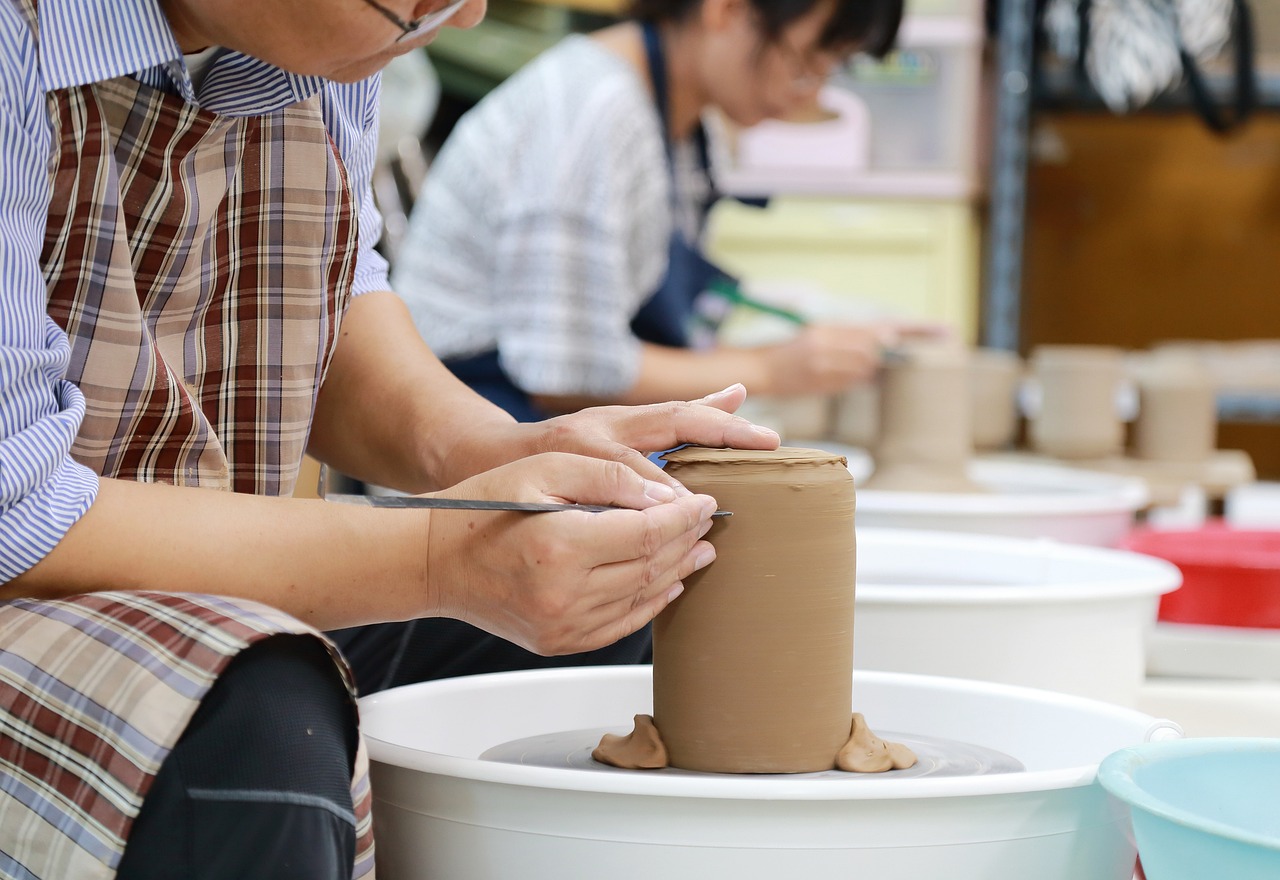
Wheel Throwing
Wheel throwing is one of the most dynamic and captivating techniques in the world of pottery. Imagine a potter, hands deftly moving over a spinning wheel, transforming a lump of clay into an exquisite vase or bowl. The wheel, a simple yet ingenious tool, allows for precision and fluidity, enabling artists to create forms that are both functional and aesthetically pleasing. But what does it take to master this art? Let’s dive into the essentials of wheel throwing, its advantages, and the skills required to become proficient.
At its core, wheel throwing involves manipulating clay on a rotating wheel. This technique not only requires a strong understanding of the material but also a keen sense of timing and rhythm. As the wheel spins, the potter must apply pressure and shape the clay, all while ensuring it remains centered. The process can be compared to dancing; it’s about finding that perfect balance between control and freedom. If you’ve ever tried to ride a bike, you know that balance is key. Similarly, in wheel throwing, if the clay isn’t centered properly, the entire piece can be ruined.
One of the primary advantages of wheel throwing is the ability to create symmetrical pieces. This is particularly beneficial for functional pottery, such as dinnerware, where uniformity can enhance both the aesthetic and practical aspects. However, this technique is not just limited to functional ware. Many artists use wheel throwing as a foundation for more intricate designs, adding texture and embellishments after the initial shape is formed. The potential for creativity is boundless!
To get started with wheel throwing, there are several essential skills that one must develop:
- Centering the Clay: Learning to center the clay is crucial. A well-centered piece will allow for easier shaping and a more balanced final product.
- Pulling Up Walls: This involves gradually raising the walls of the pot as the wheel spins. It requires a gentle touch and a good understanding of how the clay responds to pressure.
- Trimming: After the piece has dried to a leather-hard state, trimming is done to refine the shape and remove excess clay.
- Finishing Touches: Adding handles, textures, and glazes can elevate a simple thrown piece into a work of art.
Moreover, the learning curve can be steep. Beginners often find themselves frustrated as they grapple with the nuances of the wheel and the clay. However, with practice, patience, and perhaps a few pottery classes, anyone can learn to throw pots that they can be proud of. It’s akin to learning to play a musical instrument; the initial struggle is often followed by the joy of creating something beautiful.
In conclusion, wheel throwing is not just a technique; it’s an experience. It embodies the fusion of art and science, where creativity meets skill. Whether you’re crafting a simple mug or an elaborate sculpture, the wheel offers endless possibilities. So, if you’re considering diving into the world of pottery, grab some clay, find a wheel, and let your imagination take flight!
Q: What is the best clay for wheel throwing?
A: The best clay for wheel throwing is typically stoneware or porcelain, as they have good plasticity and can hold their shape well during the throwing process.
Q: Do I need a special wheel for beginners?
A: While there are many types of pottery wheels available, a basic electric wheel is usually sufficient for beginners. It allows for ease of use and control.
Q: How long does it take to learn wheel throwing?
A: The time it takes to learn wheel throwing varies from person to person. Some may grasp the basics in a few sessions, while others may take months to feel comfortable.
Q: Can I use any type of glaze on wheel-thrown pottery?
A: Not all glazes are suitable for every type of clay. It's essential to choose glazes that match the firing temperature and characteristics of the clay you are using.
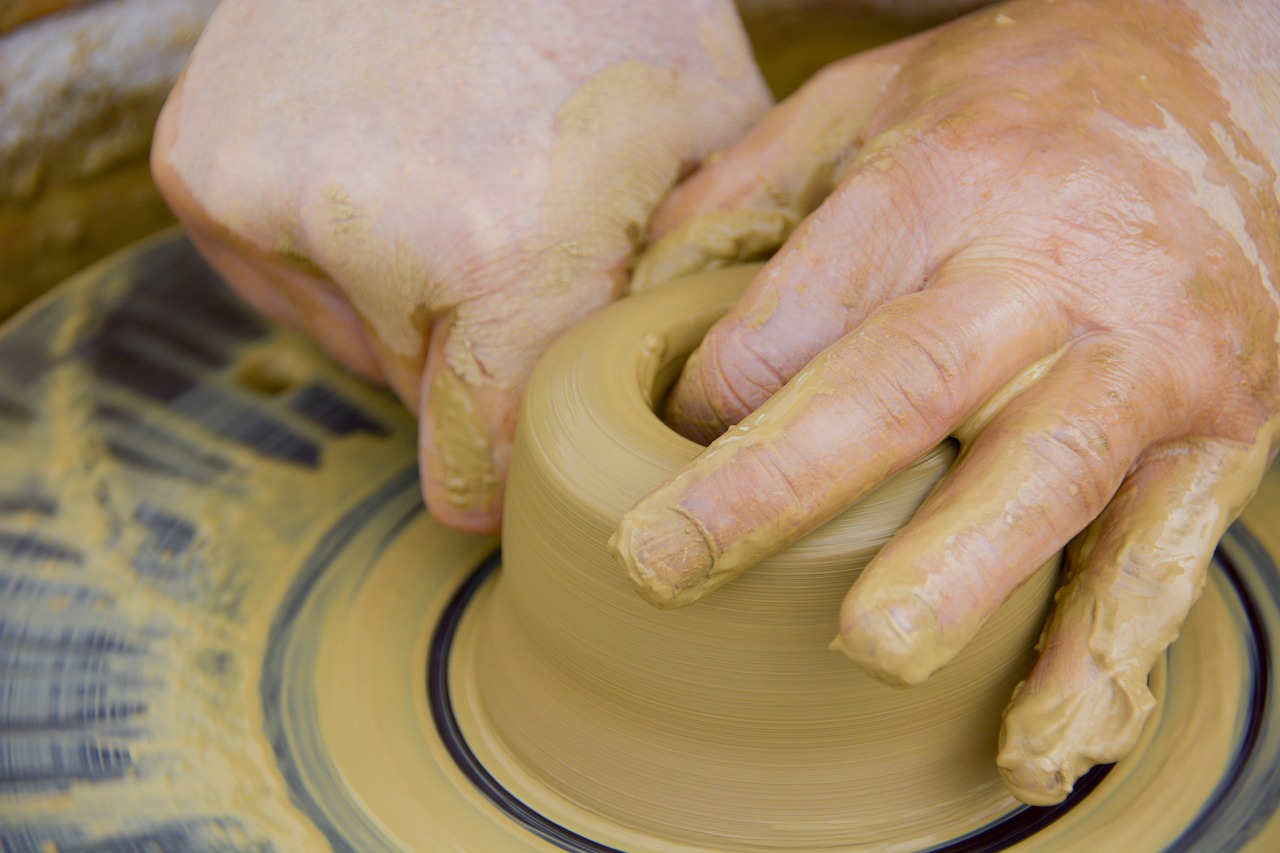
Cultural Significance of Pottery
The world of pottery is not just about shaping clay and glazing it; it’s a vibrant tapestry woven with threads of history, tradition, and identity. Across various cultures, pottery has served as a crucial medium for self-expression and communication. From ancient civilizations to modern-day artists, pottery reflects the values, beliefs, and everyday lives of people. Imagine walking through a bustling market in a small village; the colorful pots and intricate designs tell stories of the artisans who crafted them, their heritage, and the cultural narratives they embody.
In many societies, pottery is more than just functional ware; it plays a significant role in rituals and ceremonies. For instance, in Native American cultures, pottery is often used in spiritual practices and is considered a sacred art form. The designs etched into the clay are not merely decorative; they carry deep meanings, often representing the artist's connection to their ancestors and the natural world. Similarly, in ancient Egypt, pottery was used to store food, but it also had a ceremonial purpose, often found in tombs as offerings to the gods. This duality of function and symbolism showcases how pottery acts as a vessel for both practical use and cultural significance.
Moreover, pottery serves as a historical record. Archaeologists often rely on ceramic artifacts to piece together the lifestyles of past civilizations. The styles, materials, and techniques used in pottery can provide insights into trade routes, technological advancements, and social structures. For example, the transition from hand-built pottery to wheel-thrown pieces marks a significant technological evolution. This shift not only enhanced production efficiency but also influenced artistic style, showcasing how pottery evolves alongside human development.
In contemporary society, pottery continues to hold cultural significance. Artists today often draw inspiration from traditional techniques while blending them with modern aesthetics. This fusion creates a dialogue between the past and the present, allowing for a rich exploration of identity and heritage. Pottery workshops and community studios have emerged, fostering collaboration and a sense of belonging among artists. These spaces become hubs of creativity where individuals share techniques and stories, reinforcing the communal aspect of this ancient craft.
Furthermore, pottery has a unique ability to transcend boundaries. It can bring people together, regardless of their cultural backgrounds. Pottery classes and exhibitions often attract diverse participants, creating a melting pot of ideas and inspirations. This communal experience not only enriches individual practices but also cultivates a deeper appreciation for the art form and its diverse cultural roots. In essence, pottery is a universal language that speaks to the heart of humanity, bridging gaps between different cultures and generations.
In summary, the cultural significance of pottery is profound and multifaceted. It serves as a testament to human creativity, resilience, and the desire to connect with one another. Whether through ancient artifacts or modern creations, pottery continues to tell the stories of our shared human experience, reminding us that we are all part of a larger narrative.
- What is the historical significance of pottery? Pottery has been used for thousands of years across cultures, serving both functional and ceremonial purposes, and providing insights into the lifestyles of ancient civilizations.
- How does pottery reflect cultural identity? The designs, techniques, and materials used in pottery often embody the values, beliefs, and traditions of a culture, making it a powerful medium of self-expression.
- Can pottery be both functional and artistic? Absolutely! Many potters create pieces that are both beautiful and practical, showcasing their artistic skills while serving everyday purposes.
- What role does community play in pottery today? Community workshops and studios foster collaboration among artists, allowing for the sharing of techniques and cultural narratives, thus enriching the pottery-making experience.
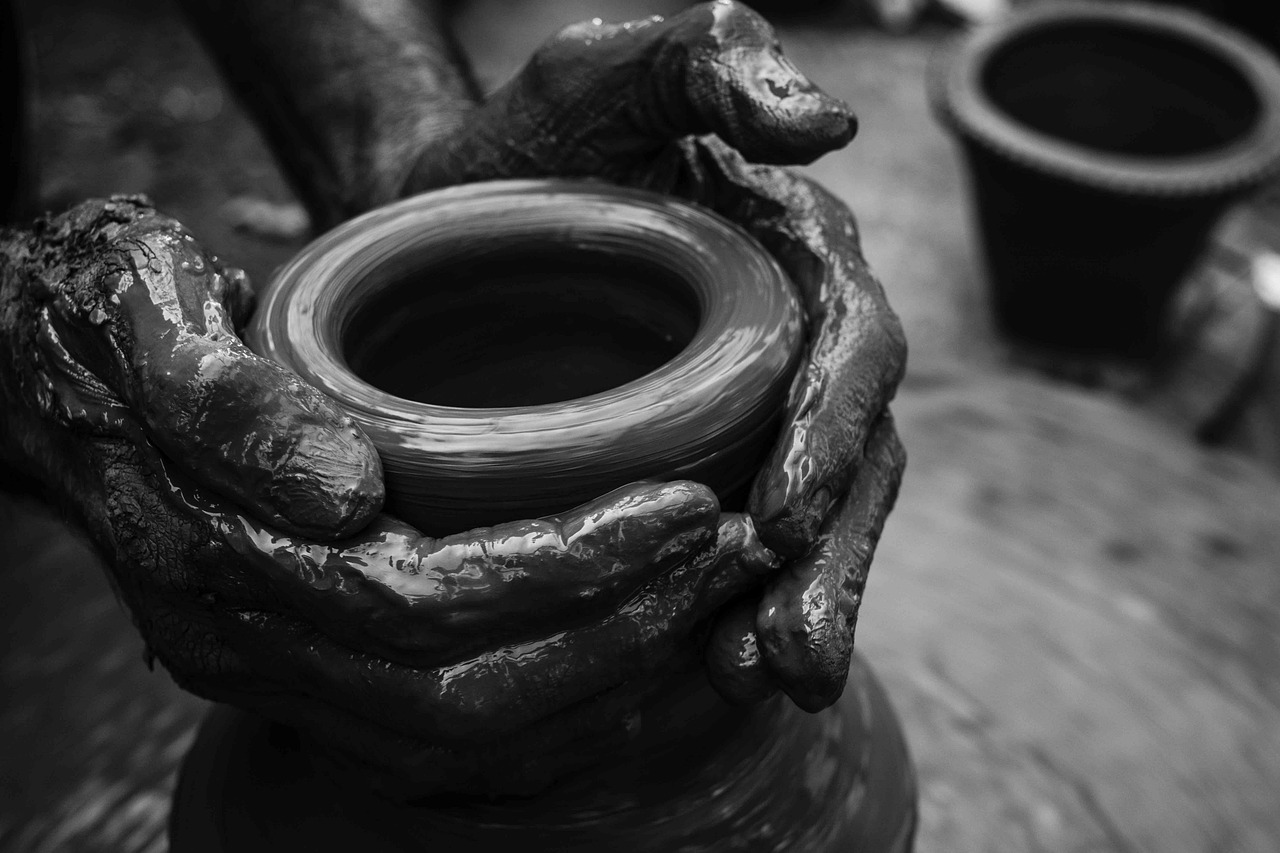
Modern Pottery Trends
In today's fast-paced world, the art of pottery is experiencing a remarkable renaissance, blending traditional craftsmanship with innovative techniques and styles. Modern pottery trends reflect a dynamic interplay between creativity and sustainability, as artists explore new materials and methods while remaining rooted in age-old practices. One of the most exciting aspects of contemporary pottery is the shift towards eco-friendly practices, where potters are increasingly mindful of their environmental footprint. This includes using natural clays, non-toxic glazes, and sustainable firing methods that minimize energy consumption.
Furthermore, the rise of social media has profoundly influenced pottery trends. Platforms like Instagram and Pinterest serve as vibrant galleries, showcasing the work of talented artisans from around the globe. This exposure not only inspires budding potters but also fosters a sense of community among artists. Many potters now collaborate on projects, sharing techniques and ideas to push the boundaries of their craft. This collaborative spirit is evident in the emergence of pop-up studios and community workshops, where people gather to learn and create together, breaking down the barriers that once isolated artists.
Another notable trend is the embrace of minimalism in pottery design. Clean lines, muted colors, and simple forms dominate the aesthetic landscape, allowing the beauty of the clay itself to shine through. This minimalist approach often contrasts with the vibrant, intricate designs of traditional pottery, offering a fresh perspective that resonates with modern sensibilities. Additionally, many potters are experimenting with mixed media, incorporating elements like wood, metal, and textiles into their pieces, creating unique, multifaceted works of art.
As we delve deeper into the realm of modern pottery, we also see a surge in the popularity of functional art. Potters are increasingly blurring the lines between utility and aesthetics, crafting pieces that are not only beautiful but also serve a practical purpose. From stunning dinnerware to eye-catching planters, these functional items invite us to appreciate the artistry in our everyday lives. This trend reflects a broader societal shift towards valuing handmade, artisanal products over mass-produced goods, as consumers seek to connect with the stories behind the objects they choose.
To illustrate the current trends in modern pottery, we can summarize some key aspects in the following table:
| Trend | Description |
|---|---|
| Sustainability | Focus on eco-friendly materials and practices that reduce environmental impact. |
| Community Collaboration | Artists working together on projects, sharing techniques and ideas. |
| Minimalism | Emphasis on clean lines and simple forms, highlighting the beauty of the clay. |
| Functional Art | Creating pieces that are both beautiful and serve practical purposes. |
In conclusion, modern pottery trends are a fascinating blend of tradition and innovation. They reflect a growing awareness of sustainability, a desire for community, and an appreciation for the beauty of functional art. As potters continue to explore new horizons, we can expect to see even more exciting developments in this timeless craft. Whether you're a seasoned potter or a curious beginner, there's never been a better time to dive into the world of pottery and discover the endless possibilities it offers.
- What materials are commonly used in modern pottery? Modern potters often use a variety of clays, such as earthenware, stoneware, and porcelain, as well as eco-friendly glazes.
- How can I get involved in pottery? Joining local pottery classes or community studios is a great way to start. Many potters also offer workshops that cater to all skill levels.
- What are the benefits of handmade pottery? Handmade pottery is unique, often more durable than mass-produced items, and supports local artisans while adding a personal touch to your home.
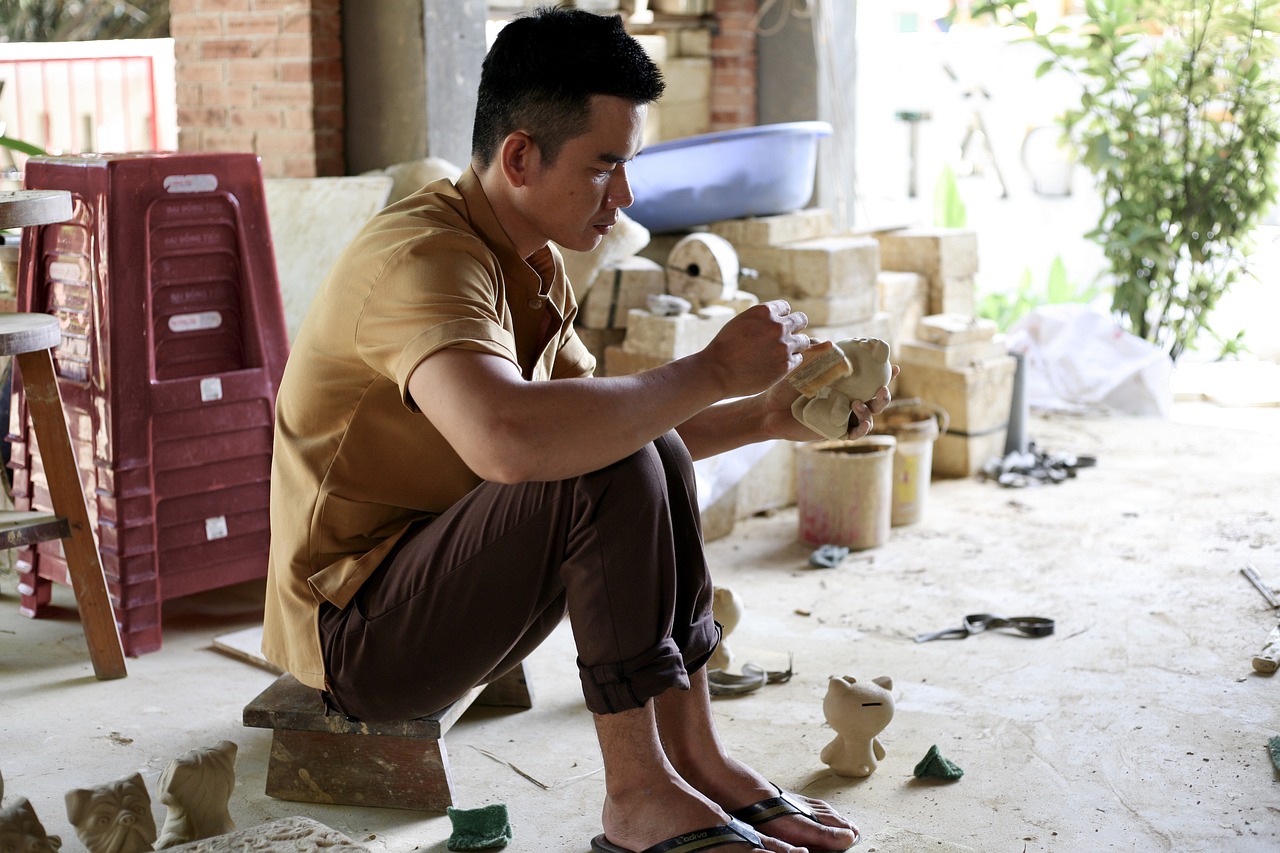
Sustainable Practices
In recent years, the world of pottery has witnessed a significant shift towards sustainability. As artists and creators become more aware of their environmental footprint, they are increasingly adopting practices that not only benefit their craft but also the planet. Sustainable pottery encompasses a variety of approaches aimed at reducing waste, conserving resources, and utilizing eco-friendly materials. This movement is not just a trend; it's a necessary evolution in the art form that reflects a deeper understanding of our impact on the environment.
One of the primary ways potters are embracing sustainability is through the use of natural materials. Many artisans now prefer to source clay from local deposits, minimizing transportation emissions and supporting the local economy. Additionally, the use of non-toxic glazes has become more prevalent, ensuring that the finished products are safe for both people and the planet. These glazes often incorporate natural oxides and minerals, which not only enhance the aesthetic appeal of the pottery but also align with eco-friendly values.
Another key aspect of sustainable pottery is the emphasis on recycling and upcycling. Potters are finding innovative ways to repurpose scraps and broken pieces of pottery. Instead of discarding these materials, they are creatively integrating them into new works, thus reducing waste. For instance, crushed pottery can be mixed into new clay bodies or used as decorative elements in new pieces. This practice not only contributes to sustainability but also adds a unique story to each creation.
Moreover, many potters are adopting energy-efficient firing techniques. Traditional kilns can consume a substantial amount of energy, but advancements in kiln technology have introduced options such as solar kilns and wood-fired kilns that utilize renewable resources. These methods not only lower energy consumption but also provide distinct aesthetic qualities to the finished pottery. For example, wood-fired pottery often exhibits unique color variations and textures that can’t be replicated in electric kilns, making each piece truly one-of-a-kind.
As the pottery community continues to evolve, the importance of education and collaboration in sustainable practices cannot be overstated. Workshops and community events focused on eco-friendly techniques are becoming more common, allowing potters to share knowledge and resources. By fostering a culture of sustainability, potters are not only improving their own practices but also inspiring others in the community to consider their environmental impact.
In summary, sustainable practices in pottery are reshaping the craft in exciting and meaningful ways. From sourcing materials responsibly to embracing innovative firing techniques, potters are leading the charge towards a more sustainable future. This shift not only benefits the environment but also enriches the artistic expression within the pottery community, creating a vibrant dialogue about the intersection of art and ecology.
- What are some eco-friendly materials used in pottery? Natural clays, non-toxic glazes, and recycled materials are popular choices among sustainable potters.
- How do potters reduce waste in their practice? Many potters recycle clay scraps and broken pieces by incorporating them into new works, thus minimizing waste.
- What are the benefits of using solar kilns? Solar kilns reduce energy consumption and can produce unique aesthetic qualities in pottery.
- How can I learn more about sustainable pottery practices? Look for local workshops, online courses, and community events focused on eco-friendly pottery techniques.
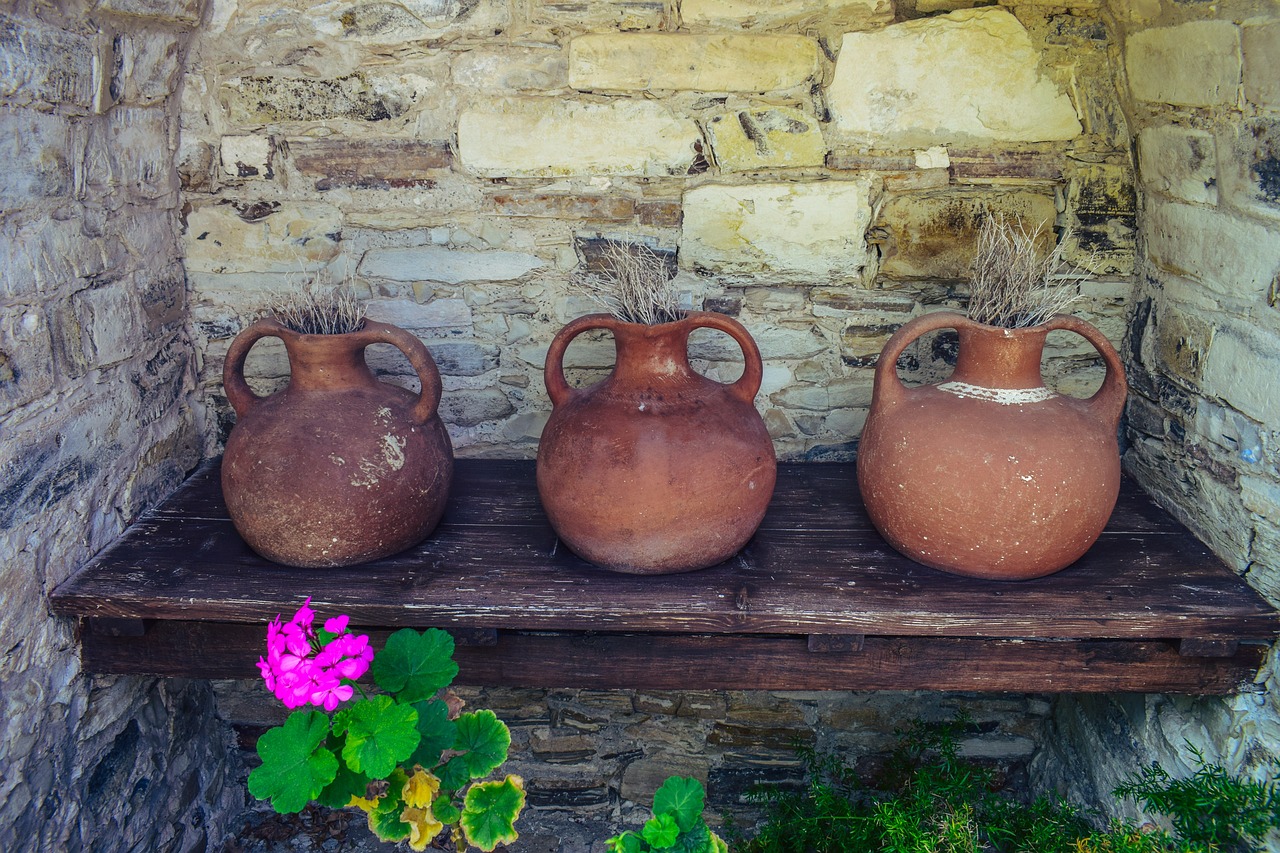
Community and Collaboration
In the world of pottery, the magic often happens when artists come together, sharing their skills, experiences, and passion. are not just buzzwords; they form the backbone of the pottery scene, fostering creativity and innovation. Imagine a vibrant studio filled with the sound of laughter, the rhythmic thud of clay being shaped, and the aroma of fresh glazes wafting through the air. This is where artists find inspiration in one another, pushing the boundaries of what pottery can be.
Collaboration in pottery can take many forms. Some artists join forces for workshops, where they teach each other new techniques or experiment with different styles. Others might participate in community projects, creating large-scale installations that reflect collective creativity. These projects not only enhance individual skills but also strengthen community bonds. For example, local pottery groups often host events where members can showcase their work, exchange ideas, and provide constructive feedback.
Furthermore, collaborative pottery studios have emerged, providing shared spaces for artists to work together. These studios often cultivate a sense of belonging and encourage artists to experiment without the fear of judgment. When potters collaborate, they can combine their unique styles and techniques, resulting in innovative works that none could achieve alone. This fusion of ideas can lead to the creation of stunning pottery pieces that reflect a diverse range of influences.
Community also plays a vital role in promoting sustainable practices in pottery. As artists share resources, they can reduce waste and adopt eco-friendly materials more effectively. For instance, some studios have implemented systems for recycling clay scraps, ensuring that nothing goes to waste. This collaborative approach not only benefits the environment but also inspires other artists to think creatively about sustainability.
In essence, the beauty of pottery lies in its ability to bring people together. Whether through shared studios, collaborative projects, or community events, the pottery world thrives on connection and camaraderie. As artists continue to unite, they not only enrich their own practices but also contribute to a broader cultural tapestry that celebrates the art of pottery.
- What is the importance of community in pottery?
Community fosters collaboration, creativity, and support among artists, enhancing their skills and encouraging innovation. - How can I get involved in a pottery community?
Look for local pottery studios, workshops, or online forums where you can meet other potters and participate in collaborative projects. - What are some benefits of collaboration in pottery?
Collaboration leads to the exchange of ideas, shared resources, and the creation of unique artworks that reflect diverse influences. - How does sustainability play a role in pottery communities?
Many pottery communities focus on eco-friendly practices, sharing resources and techniques to reduce waste and promote sustainable materials.
Frequently Asked Questions
- What materials are commonly used in pottery?
Pottery primarily uses different types of clay, including earthenware, stoneware, and porcelain. Each type of clay has unique properties that influence the final product. Additionally, glazes and finishes are applied to enhance aesthetics and functionality.
- What is the difference between earthenware, stoneware, and porcelain?
Earthenware is porous and often used for decorative pieces. Stoneware is known for its durability and is suitable for both functional and artistic pottery. Porcelain is a fine, high-fired clay that is often used for delicate and intricate designs.
- What pottery techniques should beginners learn?
Beginners should start with hand-building techniques like coiling, pinching, and slab construction. These methods help in understanding the material and developing basic skills before moving on to more advanced techniques like wheel throwing.
- How do I choose the right glaze for my pottery?
Choosing the right glaze depends on the desired finish and functionality of your piece. Consider factors like color, texture, and food safety. It's also essential to test glazes on sample pieces to see how they react during firing.
- What are some sustainable practices in pottery?
Sustainable practices in pottery include using eco-friendly materials, minimizing waste during production, and recycling clay scraps. Many artists are also exploring energy-efficient kilns and sourcing local materials to reduce their environmental impact.
- How does pottery reflect cultural significance?
Pottery often serves as a reflection of societal values and traditions. Different cultures have unique styles and techniques that tell stories of their history, beliefs, and artistic expressions through the shapes, colors, and motifs used in their pottery.
- Can pottery be a form of community collaboration?
Absolutely! Pottery often brings artists together for collaborative projects, workshops, and community events. This sharing of techniques and ideas fosters a sense of belonging and encourages creativity among participants.
- What modern trends are emerging in the pottery scene?
Modern pottery trends include a focus on minimalism, bold colors, and experimental forms. Artists are also increasingly incorporating mixed media and technology, such as 3D printing, into their work, making pottery more accessible and innovative.



















